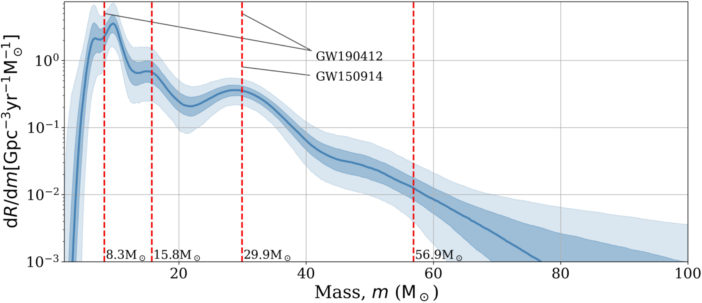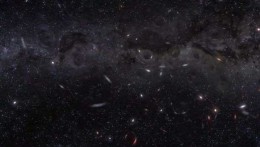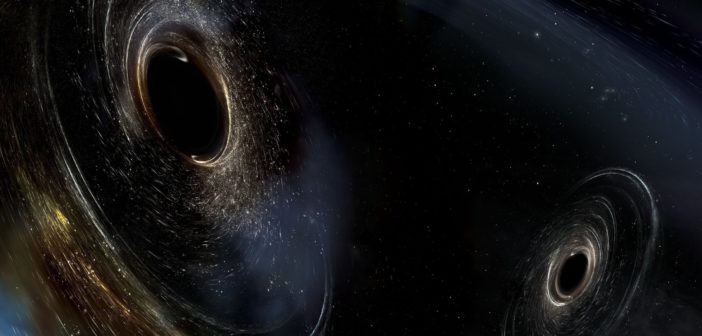Do black holes have a preferred size? New research has explored the populations of black holes involved in catastrophic, gravitational-wave-emitting collisions — and an interesting pattern has emerged.
A Question of Mass
The population of so-called stellar-mass black holes in the universe pose an interesting puzzle: What size are they, typically, and why?

The “stellar graveyard”, a plot that shows the masses of the different components of observed black hole binary mergers included in GWTC–2 (blue). Also shown are the black hole masses we’d previously measured using electromagnetic observations (purple). Click to enlarge. [LIGO-Virgo/Northwestern U./Frank Elavsky & Aaron Geller]
That picture, however, was shattered by LIGO/Virgo’s first detection of gravitational waves from a merging pair of black holes. The signal originated from a pair of black holes of ~30 and ~35 solar masses — both substantially heavier than stellar-mass black holes we’d previously observed. Since then, additional merging black holes spotted by LIGO/Virgo have continued to weigh in above 20 solar masses. Some even weigh more than 80 or 90 times the Sun!
Now that we’ve gathered a number of observations, we can start to ask what the mass distribution looks like for the underlying population of merging stellar-mass black holes. A new study by scientists Vaibhav Tiwari and Stephen Fairhurst (Cardiff University, UK) dives into the LIGO/Virgo detection catalog looking for answers.
Building a Distribution
Tiwari and Fairhurst use GWTC–2, the second LIGO/Virgo catalog of gravitational-wave detections, to analyze a population of 39 strong signals of binary black hole mergers. The authors use a statistical model to then reconstruct the underlying population of merging black holes from these data, and they explore the distributions of spins and masses for this population.

The distribution of underlying component masses for the merging black hole population shows four peaks spaced a factor of ~2 apart, rather than just a decaying power law. Click to enlarge. [Tiwari & Fairhurst 2021]
Instead, Tiwari and Fairhurst detect structure in the distribution on top of the decaying power law: a set of four peaks that fall at component masses of 9, 16, 30, and 57 solar masses.
Clues Point to More Collisions
What’s going on? The authors show that this might be a clue as to how these black holes formed.
In a hierarchical merger scenario, where black holes are built up through successive collisions of smaller black holes, we’d expect to see a mass pile-up at the location of the first peak in the mass distribution, followed by subsequent peaks spaced roughly a factor of 2 apart.

Visualization of black holes colliding at the center of a dense stellar cluster. [Carl Rodriguez/Northwestern Visualization (Justin Muir, Matt McCrory, Michael Lannum)]
Tiwari and Fairhurst caution that their results are currently based off of a very small number of data points, and we’ll need to wait until we’ve amassed more detections to make any robust claims. But if future observations confirm these trends, this could provide valuable insight into stellar-mass black holes in the universe.
Citation
“The Emergence of Structure in the Binary Black Hole Mass Distribution,” Vaibhav Tiwari and Stephen Fairhurst 2021 ApJL 913 L19. doi:10.3847/2041-8213/abfbe7

